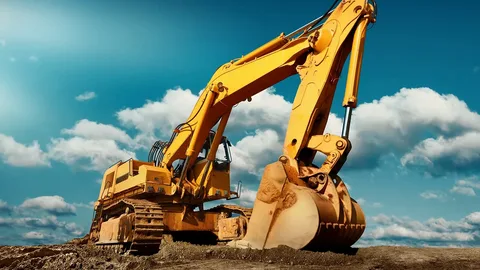
Cement and concrete are two widely used construction materials that have revolutionized the construction industry. They are essential components in building structures such as bridges, dams, and buildings, among others. Cement is a binding material used to hold other construction materials together, while concrete is a mixture of cement, water, sand, and gravel. In this article, we will explore the composition of cement and concrete and their advantages and disadvantages to determine which is better to use.
What is Cement?
Cement is a powdery substance used as a binding agent in construction. It is manufactured by heating limestone and clay in a kiln at a high temperature, which produces a clinker. The clinker is then ground into a fine powder, which is the cement that we use in construction. Portland cement is the most commonly used type of cement, which is a mixture of limestone, clay, and other materials.
What is its Composition?
Cement is primarily composed of calcium, silicon, aluminum, and iron. The exact composition of cement varies depending on the type of cement being produced. For example, Portland cement comprises 60-67% calcium oxide, 17-25% silicon oxide, 3-8% aluminum oxide, 1-5% iron oxide, and small amounts of other materials.
What is Concrete?
Concrete is a mixture of cement, water, sand, and gravel. The cement acts as a binding agent that holds the sand and gravel together, while the water provides the necessary moisture for the concrete to set and harden. The sand and gravel, also known as aggregate, provide the necessary strength and durability to the concrete.
What is its Composition?
The composition of concrete varies depending on the specific application and desired strength of the final product. However, a typical concrete mix is composed of 10-15% cement, 60-75% aggregate (sand and gravel), and 15-20% water. Some concrete mixes may also contain additives such as fly ash, slag, or chemical admixtures to improve their properties.
Advantages and Disadvantages of Cement
- Versatility
Cement’s versatility allows it to be used for a wide range of applications, including filling gaps, fixing tiles, creating molds, and even as a base for roads and buildings.
- Availability
One of the advantages of using cement is its wide availability in almost every corner of the world, making it easy to source and transport to any construction site. Cement is also widely available and can be found in most hardware stores.
- Is Fire-resistant
Cement’s high thermal mass and low flammability make it fire-resistant, able to contain fires and prevent their spread. This property enhances the safety of buildings and reduces fire-related damages.
- Is Cost-effective
Cement is a cost-effective option for small-scale construction projects as it is affordable, readily available, and requires minimal resources to produce, transport, and store.
- Is not environmentally friendly
Cement production releases a massive amount of carbon dioxide each year and harms our environment, and creates pollution. This pollution can lead to many diseases, including hormonal changes, hgh deficiency, low testosterone, and many others. As a solution to these problems, people get official prescription and search for best place to buy Sermorelin as an effective way to treat hormonal issues.
- Is less durable than concrete
Cement is not as durable as concrete and is susceptible to cracking and breaking under heavy loads or extreme temperatures.
Advantages and Disadvantages of Concrete
- Is Free from Defects and Flaws
Concrete’s uniform composition and solid structure make it free from defects and flaws, ensuring consistent strength and durability. This makes it a reliable and cost-effective building material for a wide range of applications.
- Availability
Concrete is widely available and can be easily produced from locally-sourced materials, reducing transportation costs and carbon emissions. Its abundance and accessibility make it a practical choice for construction projects worldwide.
- Durability
Concrete is highly durable and can withstand harsh weather conditions, fire, and natural disasters. Its long service life and low maintenance requirements make it a sustainable and cost-effective building material.
- Is Fire-resistant
Concrete is inherently fire-resistant due to its composition and low thermal conductivity. This property makes it a safe and reliable choice for building structures in high-risk fire areas.
- Is Resistant to Wind and Water
Concrete’s resistance to wind and water makes it ideal for use in coastal and flood-prone areas, as well as for building structures that need to withstand harsh weather conditions.
- Is Cost-effective
Concrete is affordable, making it a popular choice for many construction projects.
What is Better to Use
When it comes to choosing between cement and concrete, it really depends on the specific application and desired outcome. Cement is ideal for small-scale projects that require a binding agent, such as fixing tiles or filling gaps. Conversely, concrete is more suitable for large-scale construction projects that require durability and strength, such as building bridges, dams, and buildings.
In terms of environmental impact, both cement and concrete have their downsides. Cement production releases a massive amount of carbon dioxide each year and harms our environment, and creates pollution. However, there are solutions to these problems, such as using more sustainable materials like fly ash or slag in cement production or by using alternative building materials like wood or bamboo.
In conclusion, both cement and concrete have their advantages and disadvantages. Cement is versatile, readily available, and cost-effective, but is less durable and harmful to the environment. Concrete, on the other hand, is durable, fire-resistant, and resistant to wind and water, making it ideal for larger-scale construction projects, but it is also prone to cracking and breaking under heavy loads or extreme temperatures.
Ultimately, the choice between cement and concrete depends on the specific needs of the project and the desired outcome. It is always important to consider the environmental impact and sustainability of the materials being used and to seek out more sustainable alternatives whenever possible.







